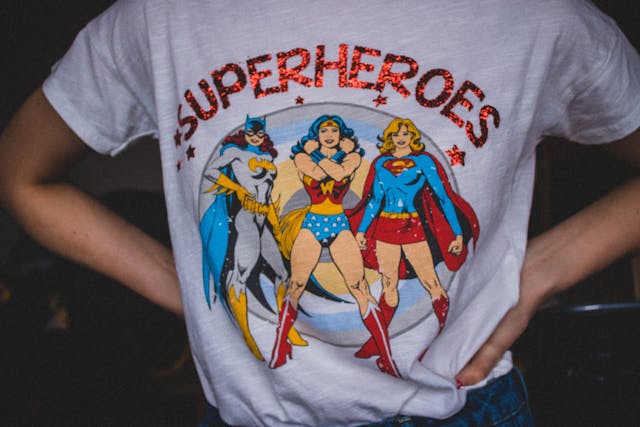Business apparel is vital in developing a corporate image and a trusted brand. It also ensures that all employees are in line with the company’s style. And to make that possible, businesses have many options when it comes to designing and distributing their apparel.
One of the most sought-after branding options is screen printing, also called silk-screen printing. Many companies choose it for great customization possibilities, durability, and low costs. Simply, there are many reasons why it’s the perfect solution for your apparel branding. And we give you an insight into this method so as its benefits for your business and impacts on the environment.
History of Screen Printing
You might be surprised, but screen printing is an old method that has been practiced for ages. It has roots in ancient China when people used stencils to put drawings on fabrics. This technique later moved to other Asian regions and came to Europe in the 18th century.
There, it went through modernization of procedures and materials and, at the beginning of the 20th century, gained the form we know. With photo-reactive chemicals, it has finally become possible to make more detailed and complex designs in any industry. As for the technique itself, modern technology has made the process faster, and the prints perfect.
It might seem old-fashioned, but screen printing is still one of the most widely used techniques for company apparel. These innovations increase its effectiveness and, at the same time, provide long-wearing dyes on various fabrics. Hence, the strong background and constant development make screen printing an industry favorite all around the globe.
Benefits
As mentioned, screen printing offers many good things that can make it a preferred choice for your business. If you already put effort into creating high-quality apparel, this method is your best ally.
Durability
For this type of printing, the ink is a bit different from the ones used in other methods. It’s thicker and less runny, almost like glue, so it can withstand washing and constant use without fading or cracking. This durability also ensures that your designs and logos won’t peel off, which wouldn’t look quite professional, right?
Budget-Friendliness
Screen printing is great for bulk quantities of apparel. What takes a bit more effort and time is setting up stencils (screens) for each color in the design, but the rest of the procedure is smooth and almost effortless. Once your form is ready, it’s easy to print large quantities (hundreds or even thousands) in a relatively short time and with low expenses.
Customization Options and Versatility
Prepared stencils can be used on almost any fabric and many other materials, be it cotton, polyester, or even on unusual such as metal or plastic. This adaptability makes screen printing a great option when you have a wide range of company apparel you want to put your logo or design on. These can be T-shirts, hoodies, tote bags, and many others.
Versatility also applies to color choices, which are very diverse in printables done with this method. Think layers of ink make vibrant and sharp-looking colors in the subsequent prints, so each printed item will look exactly the same.
Scalability
Screen printing can accommodate both small and large orders and meet the needs of businesses of all sizes. For instance, if your business requires fifty shirts for a one-time event and five thousand T-shirts for a national company’s promotion event, then screen printing is a solution for both requirements.
Applications in Businesses
The major role of screen-printed apparel is in branding and marketing. T-shirts and other branded wearables are like walking ads that increase visibility and recognition. These are common during trade fairs, conferences, and other social activities where companies pass their messages to a wide audience.
Below you can find out why good branding matters:
https://www.forbes.com/sites/forbesagencycouncil/2021/03/24/the-importance-of-branding-in-business/
Screen-printed apparel is also great for staff uniforms. In some companies, employees wear uniform clothes that create a sense of professionalism and unity. With screen printing, uniforms will be recognizable and resistant to wear and tear, even after daily wearing and washing.
Corporate events also call for screen-printed items. Regardless of the affair, whether it’s more or less formal, custom apparel makes a wonderful impression. Such items aren’t just a symbolic event memory but also a way of reminding people about your company or a brand.
Lastly, you can print all kinds of apparel for charity and fundraising events. Most companies make and offer custom t-shirts or bags with slogans/prints and give the profits to certain causes, schools, or sports teams. These are low-cost yet quality merchandise any company can use to reach its goals.
Environmental Considerations
All explained benefits contribute to a great image of screen printing. Still, it’s good to know about its environmental impact. Due to chemicals and large amounts of water used in this and any other printing method, it’s good to mention efforts that printing companies make to adopt more environmentally friendly procedures.
Nowadays, screen printing firms use water-based inks which are biodegradable and non-toxic, unlike traditional plastisol ink. These inks also create softer and more pleasant prints on wearables, making them comfortable to wear.
As for water consumption, many companies have adopted improved cleaning processes to save water and avoid chemical spills. They usually use closed-loop systems that filter and reuse water. More about this and other sustainable practices in business see on this web source.
Last but not least, many companies use organic and sustainable fabric for screen printing. With these eco-friendly options, they can limit the negative effects on the environment without compromising the quality and importance of their apparel. They obtain quality and long-lasting value but also achieve sustainability and affect the minds of their customers of the importance of sustainable living.
Screen printing has many uses in the commercial world, helping businesses develop their brands and establishing a strong corporate image. It benefits both startups and large corporations that need to brand their products while saving on costs, improving apparel quality, and achieving sustainability.







